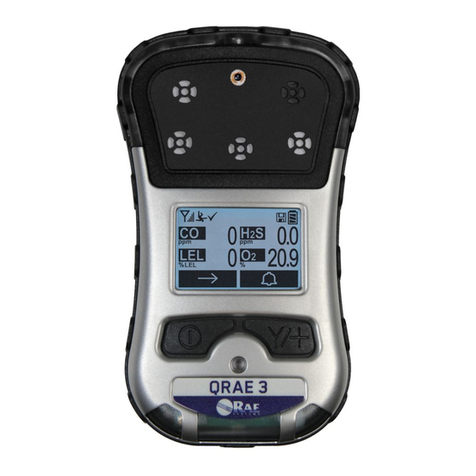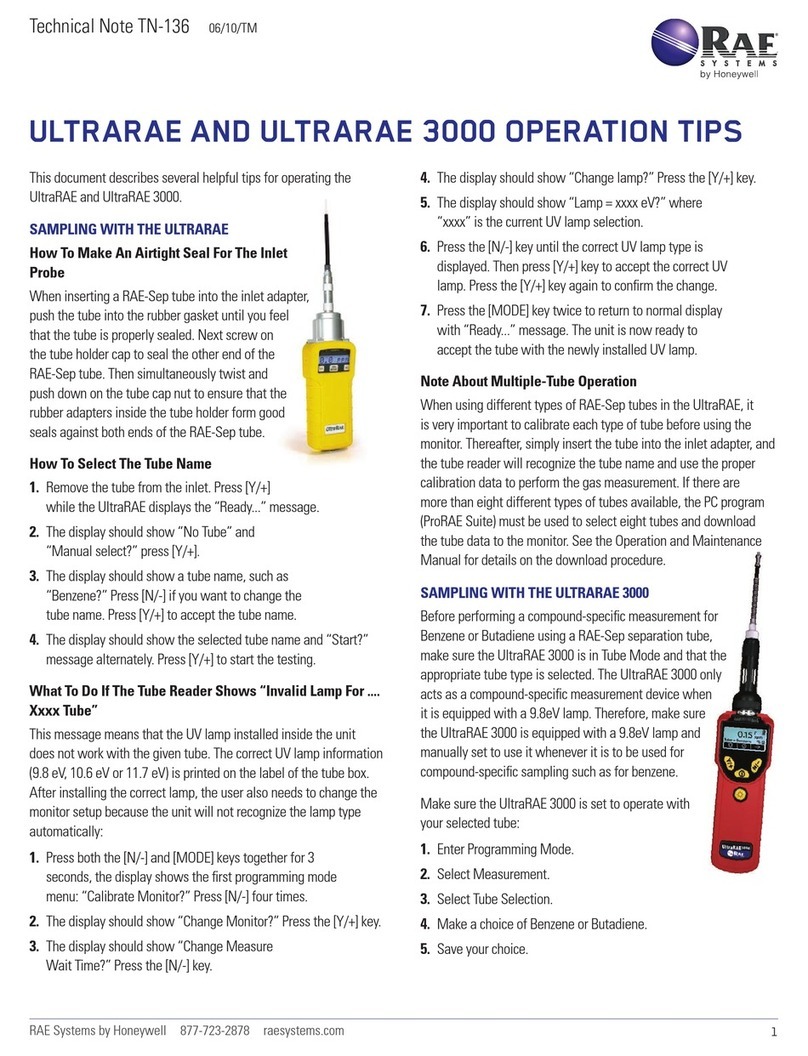Rae IAQRAE PGM-5210 Manual
Other Rae Measuring Instrument manuals
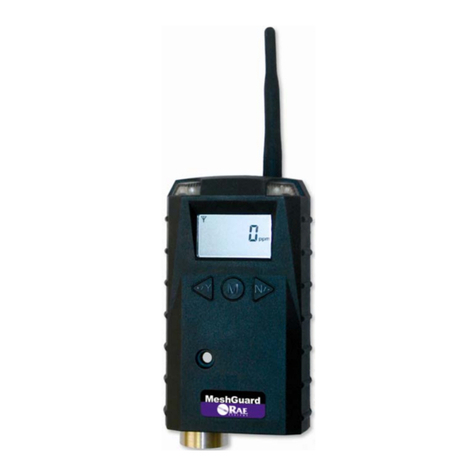
Rae
Rae MeshGuard User manual
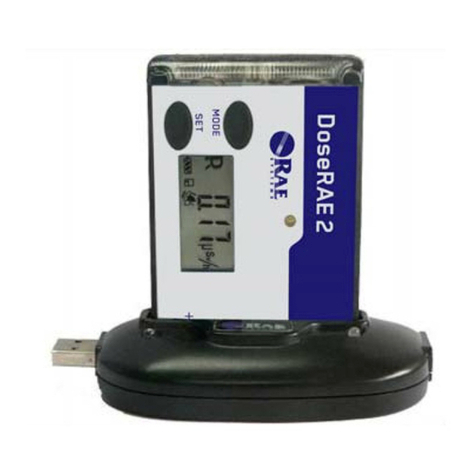
Rae
Rae DoseRAE 2 User manual
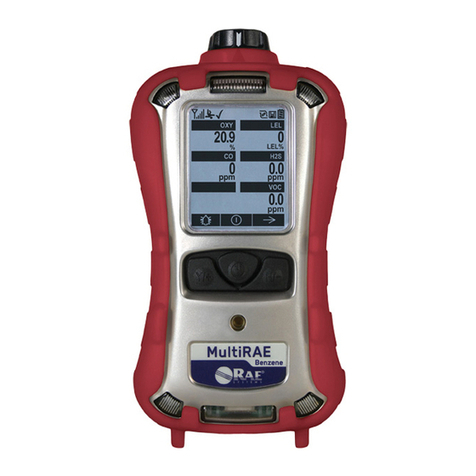
Rae
Rae TN-204 User manual
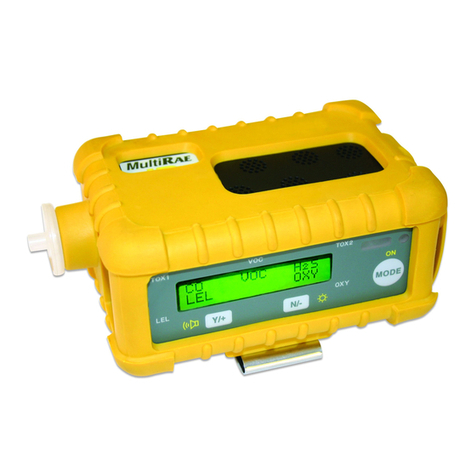
Rae
Rae MultiRAE Plus PGM-50/4 User manual
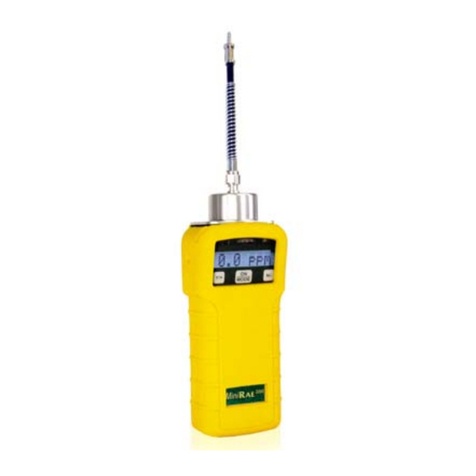
Rae
Rae MiniRAE 2000 PGM-7600 User manual
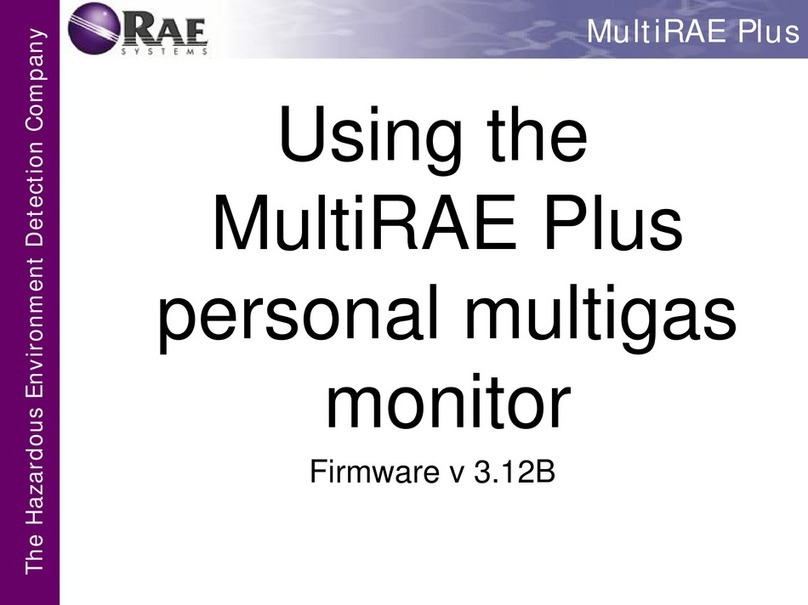
Rae
Rae MultiRAE Plus Guide
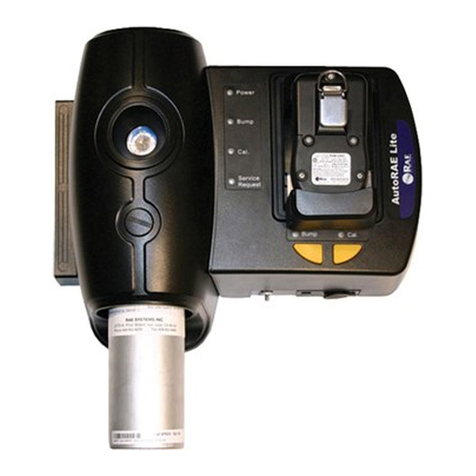
Rae
Rae AutoRAE Lite User manual
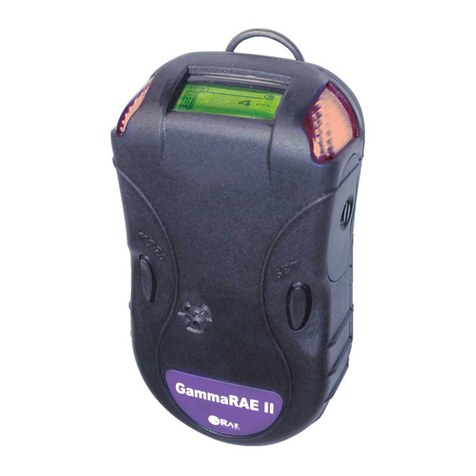
Rae
Rae GammaRAE II Installation guide
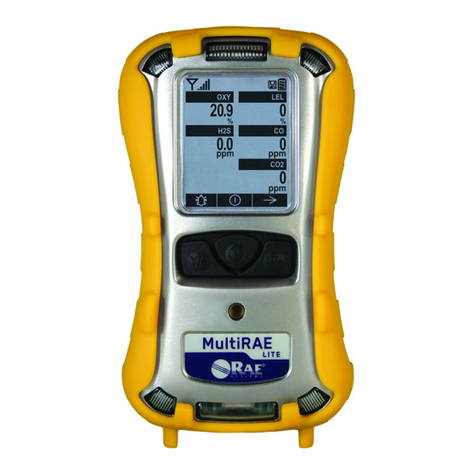
Rae
Rae MultiRAE User manual
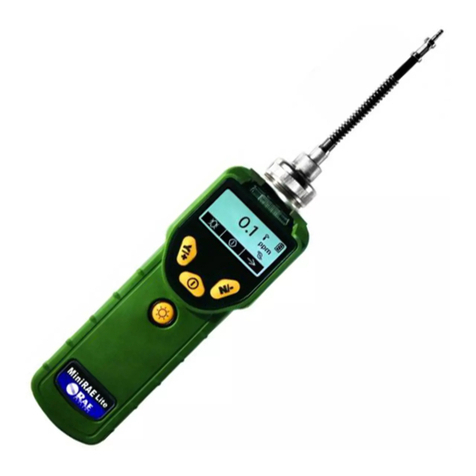
Rae
Rae MiniRAE Lite User manual

Rae
Rae QRAE II User manual
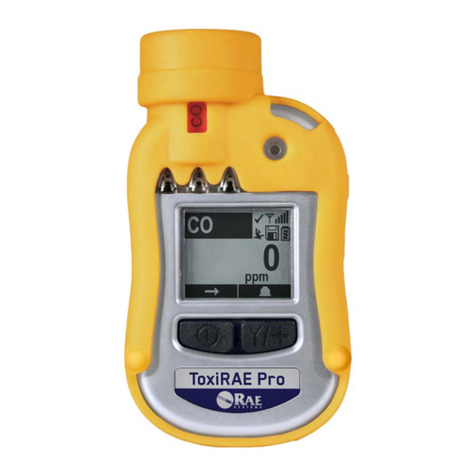
Rae
Rae ToxiRAE Pro User manual

Rae
Rae GammaRAE II User manual

Rae
Rae VRAE PGM-7800 User manual
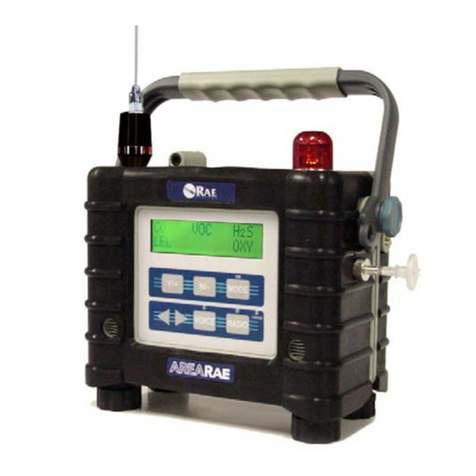
Rae
Rae AreaRAE Installation guide

Rae
Rae UltraRAE PGM-7200 User manual
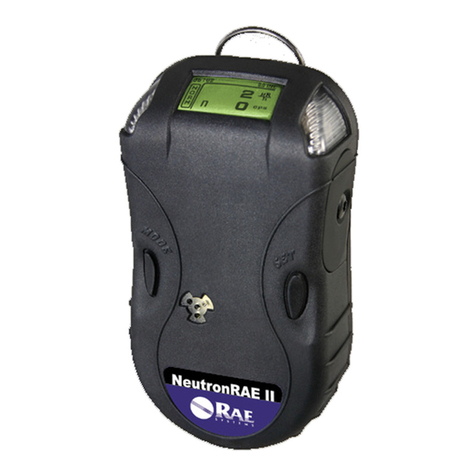
Rae
Rae NeutronRAE II User manual
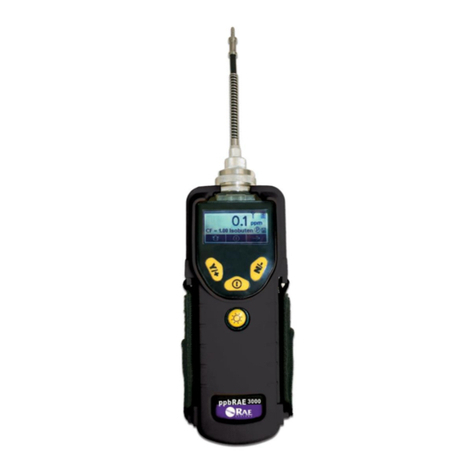
Rae
Rae ppbRAE 3000 User manual
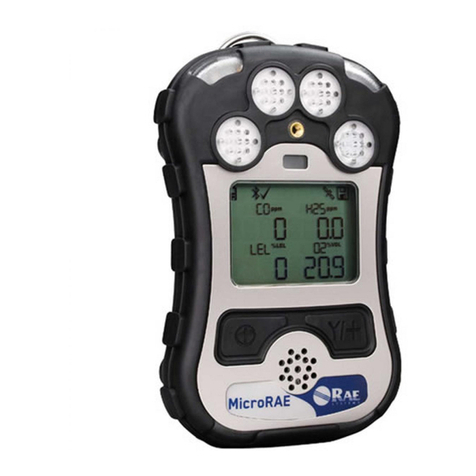
Rae
Rae microrae User manual
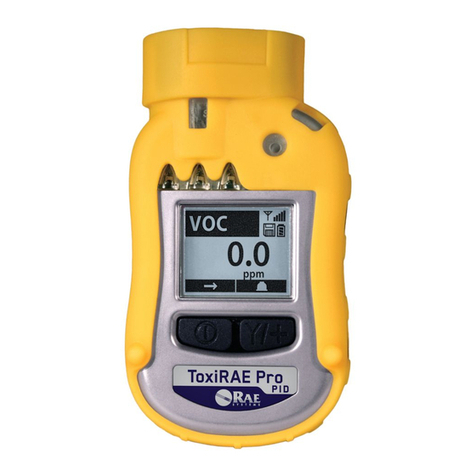
Rae
Rae ToxiRAE Pro PID User manual
Popular Measuring Instrument manuals by other brands

Powerfix Profi
Powerfix Profi 278296 Operation and safety notes

Test Equipment Depot
Test Equipment Depot GVT-427B user manual

Fieldpiece
Fieldpiece ACH Operator's manual

FLYSURFER
FLYSURFER VIRON3 user manual

GMW
GMW TG uni 1 operating manual

Downeaster
Downeaster Wind & Weather Medallion Series instruction manual

Hanna Instruments
Hanna Instruments HI96725C instruction manual

Nokeval
Nokeval KMR260 quick guide

HOKUYO AUTOMATIC
HOKUYO AUTOMATIC UBG-05LN instruction manual

Fluke
Fluke 96000 Series Operator's manual

Test Products International
Test Products International SP565 user manual

General Sleep
General Sleep Zmachine Insight+ DT-200 Service manual


